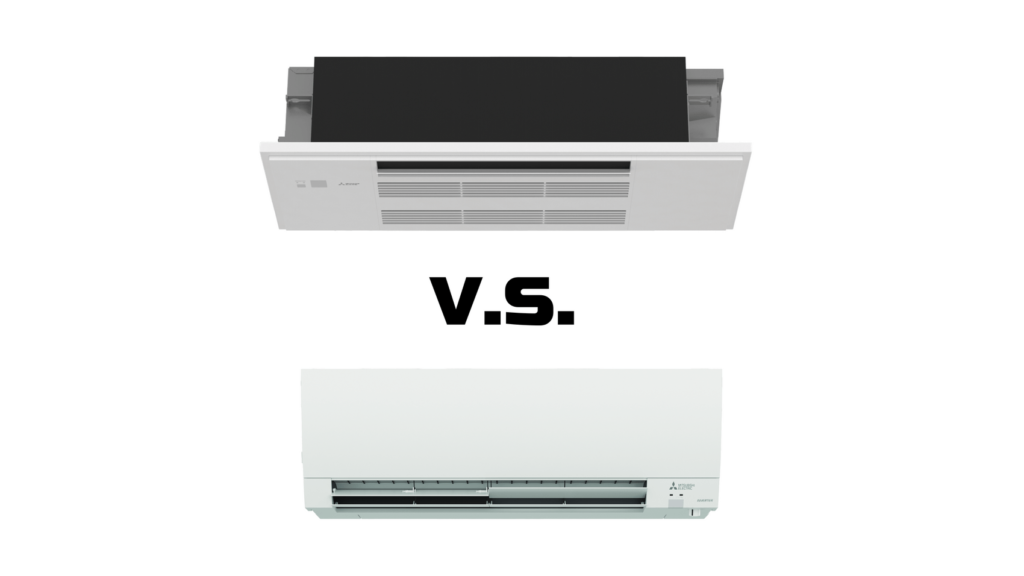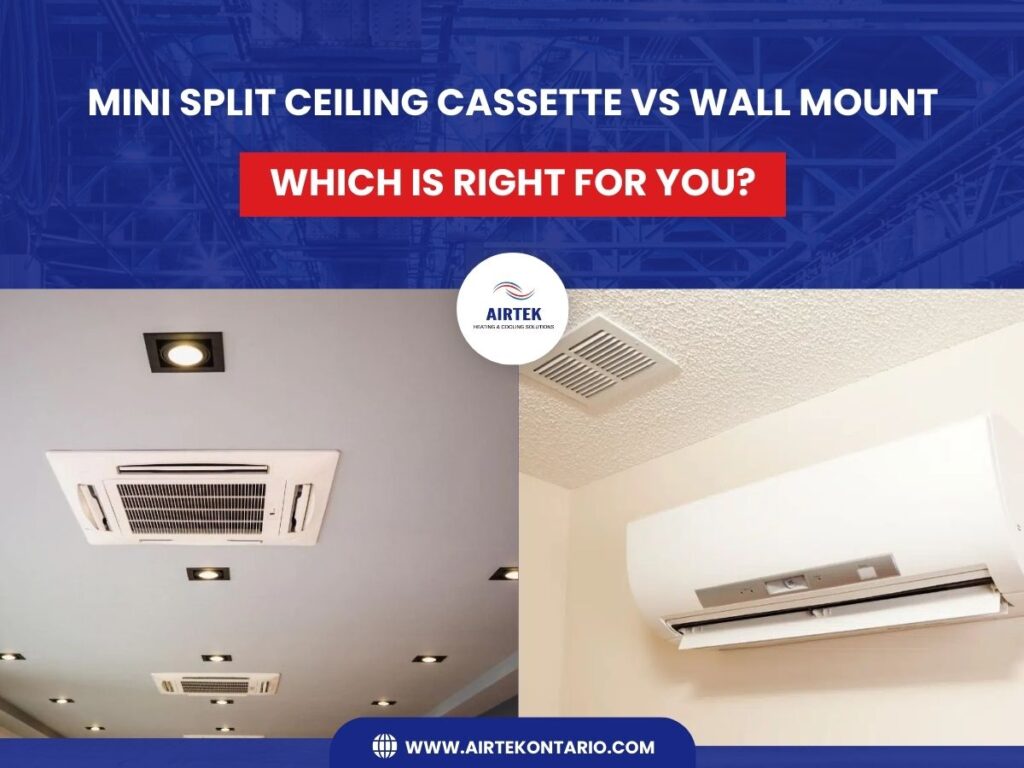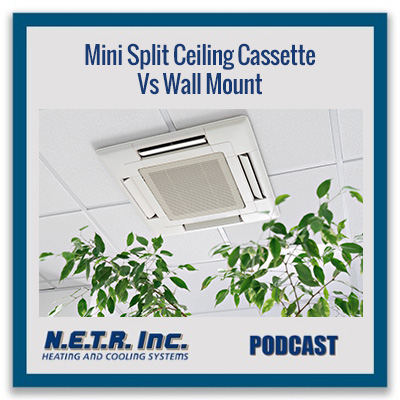Hey there! Are you in the market for a new HVAC system but can’t decide between a mini split and a ceiling cassette system? Look no further! In this article, we will compare the two options to help you determine which one is the best fit for your needs. From installation to energy efficiency to aesthetics, we will break down all the important factors so you can make an informed decision. Let’s dive in and find the perfect heating and cooling solution for your space! Have you been considering installing a new HVAC system in your home or office, but can’t decide between a mini split system and a ceiling cassette system? Both options have their pros and cons, so it’s important to weigh them carefully before making a decision. In this article, we will compare mini split systems and ceiling cassette systems to help you determine which is the best option for your specific needs. Let’s dive in and explore the differences between these two popular HVAC systems.

This image is property of gotductless.com.
Mini Split Systems: An Overview
Mini split systems, also known as ductless systems, are becoming increasingly popular due to their energy efficiency, easy installation, and flexibility. These systems consist of an outdoor compressor unit and one or more indoor air-handling units, connected by refrigerant lines. Mini split systems are typically used to heat or cool individual rooms or areas, making them a great option for homes with inconsistent heating and cooling needs.
Mini split systems are available in various configurations, including single-zone and multi-zone systems. Single-zone systems are designed to heat or cool a single room, while multi-zone systems can heat or cool multiple rooms using a single outdoor unit. Mini split systems offer precise temperature control and are highly energy-efficient, making them a popular choice for homeowners looking to reduce their energy bills.
Advantages of Mini Split Systems
- Energy-efficient: Mini split systems use less energy than traditional HVAC systems, resulting in lower utility bills.
- Easy installation: Mini split systems are easy to install, as they do not require ductwork like traditional central HVAC systems.
- Zoned heating and cooling: Mini split systems allow you to control the temperature of individual rooms or areas, increasing comfort and energy savings.
Mini split systems are a great option for homeowners looking to heat or cool specific rooms in their homes without the need for ductwork. These systems offer energy efficiency, easy installation, and zoned temperature control, making them a popular choice in the HVAC market.
Ceiling Cassette Systems: An Overview
Ceiling cassette systems, also known as cassette air conditioners, are designed to be installed in the ceiling of a room, providing heating and cooling without taking up valuable floor space. These systems consist of a central outdoor unit connected to one or more ceiling-mounted indoor units via refrigerant lines. Ceiling cassette systems are capable of heating or cooling larger areas than mini split systems, making them a great option for commercial spaces or large open areas.
Ceiling cassette systems are available in various capacities and configurations, allowing for customizable solutions to meet the heating and cooling needs of different spaces. These systems distribute air evenly throughout a room, providing consistent temperature control and comfort. Ceiling cassette systems are a popular choice for businesses looking to maintain a comfortable indoor environment for their employees and customers.
Advantages of Ceiling Cassette Systems
- Space-saving design: Ceiling cassette systems are installed in the ceiling, freeing up floor space for other purposes.
- Even air distribution: Ceiling cassette systems distribute air evenly throughout a room, providing consistent temperature control.
- Customizable configurations: Ceiling cassette systems are available in various capacities and configurations, allowing for personalized solutions.
Ceiling cassette systems are a great option for businesses or homeowners looking to heat or cool larger areas with a space-saving design. These systems offer even air distribution, customizable configurations, and quiet operation, making them a popular choice in the HVAC market.

This image is property of cdn11.bigcommerce.com.
Comparing Mini Split vs. Ceiling Cassette Systems
Now that we’ve explored the key features and advantages of mini split systems and ceiling cassette systems, let’s compare the two options side by side to help you make an informed decision on which system is the best option for your specific needs.
Energy Efficiency
When it comes to energy efficiency, mini split systems have the upper hand over ceiling cassette systems. Mini split systems use less energy to heat or cool individual rooms, resulting in lower energy bills. These systems are designed to provide precise temperature control without wasting energy, making them a cost-effective option for homeowners looking to reduce their energy consumption.
Ceiling cassette systems are also energy-efficient, but they may consume more energy than mini split systems due to their larger capacity and coverage area. These systems are designed to heat or cool larger areas, which may result in higher energy usage compared to mini split systems. However, ceiling cassette systems are still a more energy-efficient option than traditional central HVAC systems.
Installation
In terms of installation, mini split systems are easier to install than ceiling cassette systems. Mini split systems do not require ductwork, which simplifies the installation process and reduces costs. These systems can be installed quickly and easily, making them a convenient option for homeowners looking to upgrade their HVAC systems without the hassle of extensive construction work.
Ceiling cassette systems, on the other hand, require more complex installation due to their ceiling-mounted design. These systems need to be installed in the ceiling of a room, which may require additional structural modifications and professional installation. While ceiling cassette systems provide a sleek and space-saving design, the installation process can be more time-consuming and costly compared to mini split systems.
Flexibility
When it comes to flexibility, mini split systems offer more options than ceiling cassette systems. Mini split systems are available in various configurations, including single-zone and multi-zone systems, allowing homeowners to customize their heating and cooling solutions to meet their specific needs. These systems provide zoned temperature control, allowing for personalized comfort in different areas of a home.
Ceiling cassette systems offer limited flexibility compared to mini split systems. These systems are designed to heat or cool larger areas, such as commercial spaces or open-plan offices, making them less customizable for residential use. While ceiling cassette systems provide consistent temperature control and even air distribution, they may not offer the same level of flexibility as mini split systems in terms of zoned heating and cooling.
Cost
When it comes to cost, both mini split systems and ceiling cassette systems have their advantages. Mini split systems are typically more affordable than ceiling cassette systems, making them a cost-effective option for homeowners looking to upgrade their HVAC systems on a budget. These systems require less installation work and materials, resulting in lower upfront costs compared to ceiling cassette systems.
Ceiling cassette systems are more expensive than mini split systems due to their larger capacity and coverage area. These systems require professional installation and structural modifications, which may increase the overall cost of the system. While ceiling cassette systems offer energy-efficient heating and cooling for large areas, they may not be a budget-friendly option for homeowners looking to save on upfront costs.

This image is property of www.netrinc.com.
Conclusion
In conclusion, both mini split systems and ceiling cassette systems have their advantages and disadvantages, making them suitable options for different heating and cooling needs. Mini split systems are a great option for homeowners looking to heat or cool individual rooms with precision temperature control and energy efficiency. These systems are easy to install, cost-effective, and flexible, making them a popular choice in the HVAC market.
Ceiling cassette systems are ideal for businesses or homeowners looking to heat or cool larger areas with even air distribution and customizable configurations. These systems offer a space-saving design, consistent temperature control, and quiet operation, making them a practical option for commercial spaces or open-plan offices. While ceiling cassette systems may be more expensive than mini split systems, they provide efficient heating and cooling for larger areas, making them a valuable investment in the long run.
Ultimately, the best option between mini split systems and ceiling cassette systems depends on your specific heating and cooling needs, budget, and preferences. Consider the key features and advantages of each system to determine which option aligns with your requirements and priorities. Whether you choose a mini split system or a ceiling cassette system, both options offer efficient heating and cooling solutions for different spaces and applications. Choose wisely and enjoy a comfortable indoor environment all year round.

This image is property of media.angi.com.
